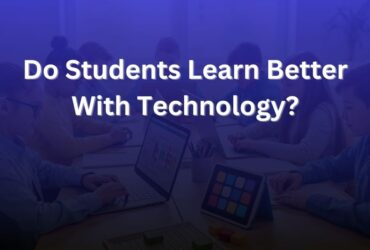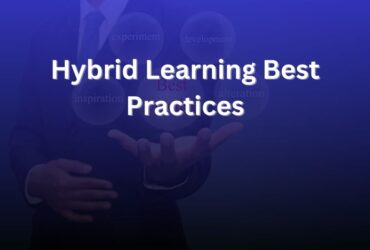Discover the essentials of crafting e-learning strategies that cater specifically to the needs of working professionals. Understand the importance of flexibility and relevance in online learning environments. Explore key elements that ensure successful knowledge transfer and skill acquisition.
Understanding the Unique Needs of Working Professionals
In the realm of e-learning, recognizing the unique challenges faced by working professionals is crucial. Balancing work responsibilities with continuous learning can be daunting, making flexibility a vital component of any e-learning strategy. Tailoring content to fit into busy schedules ensures that learners remain engaged and motivated. For example, a masters in lean manufacturing online offers courses designed with this flexibility in mind, allowing professionals to advance their careers without sacrificing their current job commitments. By understanding these needs, e-learning platforms can offer targeted solutions that maximize both time and educational value.
Another important aspect of catering to working professionals is acknowledging their wealth of experience and expertise. E-learning strategies should incorporate opportunities for these learners to share their insights and apply their professional knowledge within the course. This approach not only enriches the learning experience for all participants but also validates the learners’ existing skills. Implementing case studies, discussion forums and peer-to-peer mentoring can create a collaborative learning environment that leverages the collective expertise of the group. By recognizing and utilizing the professional background of learners, e-learning platforms can create more engaging, relevant, and impactful educational experiences.
Additionally, e-learning strategies for working professionals should emphasize microlearning techniques. Breaking down complex topics into bite-sized, easily digestible modules allows learners to acquire knowledge in short bursts that fit into their busy schedules. These micro-lessons, typically lasting 5-10 minutes, can be accessed on the go via mobile devices, making learning possible during commutes or lunch breaks. By incorporating microlearning, e-learning platforms cater to the time constraints of working professionals while also improving information retention and application. This approach also allows for more frequent updates to course content, ensuring that learners always have access to the most current information in their field.
Incorporating Interactive and Engaging Content
An effective e-learning strategy must prioritize the creation of engaging content that captivates the learner’s attention. This involves integrating multimedia elements such as videos, quizzes and interactive modules that foster active participation. Using varied content types helps cater to different learning styles and keeps the material fresh and interesting. Consistent feedback mechanisms also play a significant role in maintaining learner engagement by providing insights into their progress and areas for improvement. A well-designed e-learning platform should aim to replicate the dynamism of a traditional classroom environment through digital means.
Gamification is another powerful tool in creating engaging e-learning content for working professionals. By incorporating game-like elements such as points, badges, leaderboards, and challenges, courses can tap into the competitive spirit and motivation of adult learners. These gamified elements can make learning more enjoyable and increase retention rates. For instance, a project management course might include a simulated project scenario where learners earn points for successfully navigating challenges and making effective decisions. This approach not only makes the learning process more enjoyable but also provides a safe environment for professionals to practice and hone their skills without real-world consequences.
Incorporating social learning elements into e-learning strategies can significantly enhance engagement for working professionals. By creating opportunities for peer-to-peer interaction, such as discussion boards, group projects, and virtual study groups, learners can share experiences, solve problems collaboratively, and build professional networks. This social aspect not only makes the learning experience more enjoyable but also mirrors real-world workplace scenarios where teamwork and communication are essential. Additionally, featuring user-generated content, such as case studies or best practices shared by fellow professionals, can provide valuable insights and foster a sense of community among learners. This approach leverages the collective knowledge of the group, making the learning experience richer and more relevant to real-world professional contexts.
Leveraging Technology for Personalized Learning Experiences
Technology plays an instrumental role in personalizing the learning experience for each professional. Advanced algorithms and AI tools can analyze learner data to tailor courses that match individual preferences and learning speeds. This personalized approach not only boosts engagement but also ensures efficient knowledge retention by focusing on areas where learners need more support. Additionally, technology enables seamless collaboration among peers through virtual study groups and forums, fostering a sense of community even in an online setting. As technology continues to progress, its integration into e-learning strategies will become increasingly sophisticated and effective.
The integration of Virtual Reality (VR) and Augmented Reality (AR) technologies is revolutionizing personalized learning experiences for working professionals. These immersive technologies allow learners to engage with complex concepts in a hands-on, risk-free environment. For instance, medical professionals can practice surgical procedures in VR, while engineers can visualize and interact with 3D models of their designs. AR can overlay information onto real-world objects, enhancing on-the-job training and performance support. As these technologies become more accessible, their incorporation into e-learning strategies will provide unprecedented levels of engagement and practical skill development, bridging the gap between theoretical knowledge and real-world application.
Ensuring Relevance and Practical Application
Relevance is key in developing e-learning content for professionals who seek practical applications of their newfound knowledge. Courses should be structured around real-world scenarios that professionals encounter in their respective fields. This approach not only enhances understanding but also boosts confidence as learners apply their skills directly to their work settings. Regular updates to course materials are essential to ensure they align with the latest industry trends and technologies. By prioritizing relevance, e-learning programs can significantly enhance the value they provide to learners.
To further enhance relevance and practical application, e-learning strategies should incorporate industry partnerships and collaborations. By working closely with leading companies and organizations in various sectors, e-learning platforms can develop courses that directly address current industry needs and challenges. This collaboration can take the form of co-created content, guest lectures from industry experts, or even virtual internships and projects. For example, a data science course might partner with a tech company to provide learners with real datasets and business problems to solve. This approach not only ensures that the content remains cutting-edge and relevant but also provides learners with valuable networking opportunities and potential pathways to career advancement.












































Leave a Reply